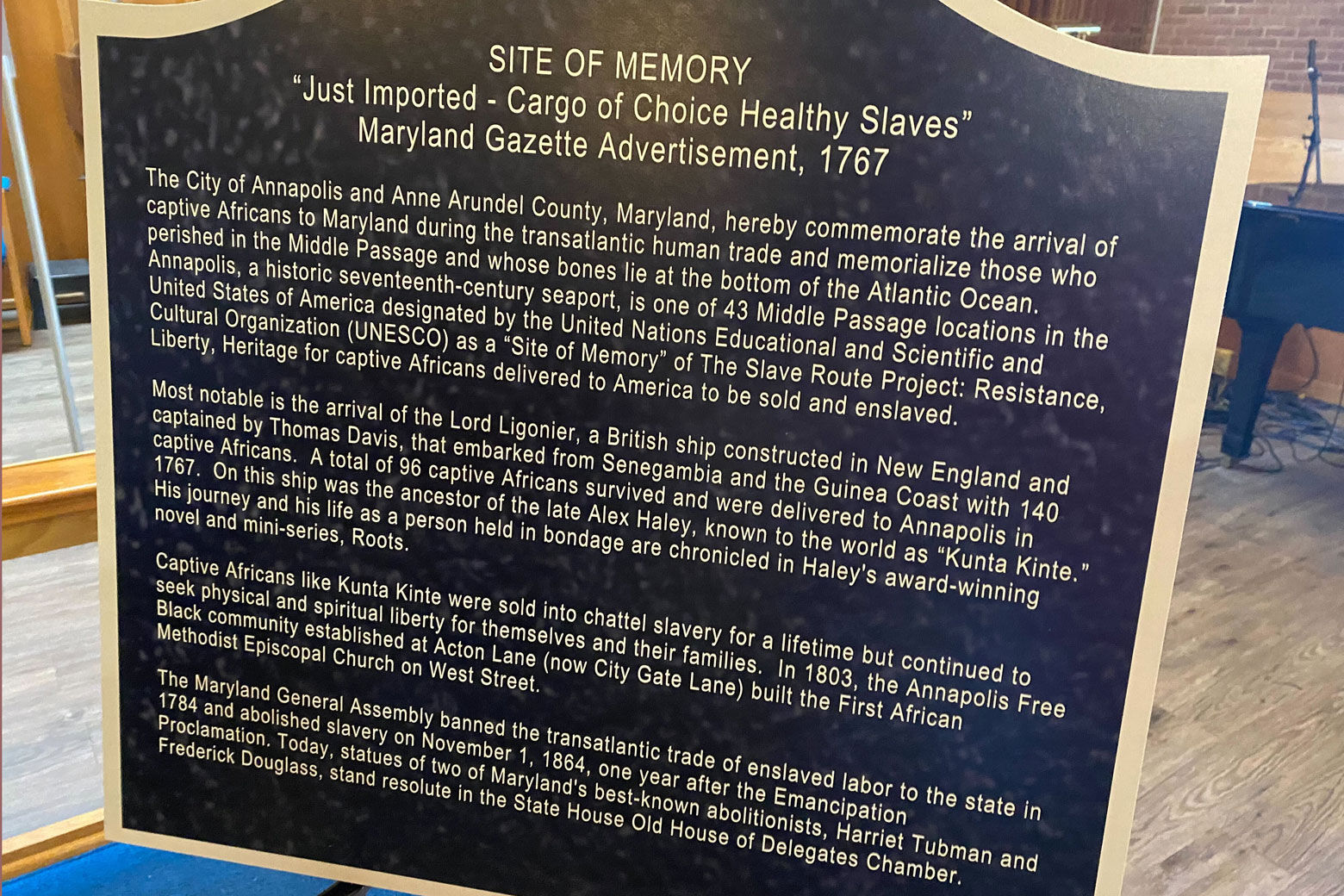The Asbury United Methodist Church in Annapolis was packed Tuesday as city, county and civil rights leaders gathered to see the design of the Port Marker plaque coming to City Dock.
Soon, the plaque will commemorate the thousands of slaves who were taken across the Atlantic Ocean and up the bay before being forced to plantations around the region.
The Middle Passage Ceremonies and Port Markers Project, sponsored by the United Nations Education, Cultural and Scientific Organization (UNESCO), seeks to document every port that was used to bring slaves to the United States from Africa. The first petition to UNESCO started 10 years ago, and in 2019 got a push when Anne Arundel County Executive Steuart Pittman and Annapolis Mayor Gavin Buckley made an appeal.
The plaque’s unveiling was part church service and part history lesson, as re-enactors also delved into the post-emancipation history of Annapolis — both the good and the bad.
“It’s really important,” said Pittman. “It’s the capital of Maryland and we’ve got to learn our history and we’ve got to be able to deal with it.”

Janice Hayes-Williams, whose ancestors were among the slaves brought to Annapolis, wrote the wording on the plaque, which noted that the ancestor of “Roots” author Alex Haley was among those brought to Annapolis. The plaque also mentions the Lord Ligonier, which left Africa with 140 captive Africans. Only 96 survived.
But Hayes-Williams said after the ceremony that there’s another side to the history of City Dock.
“Guess what?,” she said. “That’s the same dock where my mother took me to put me to sleep as a child in the summers. It’s our dock. We came here from it. Now it’s a beacon … a beacon of history.”
The plaque notes how Annapolis is one of 43 ports along what’s known as the Middle Passage.
“It tells the story of my ancestors coming to Annapolis,” said Hayes-Williams. “What this says to me is ‘Go back, get that history, and teach the children.'”
“It’s for everybody,” she added. “Not just Africans — the people who enslaved us, the people who helped us get away. To give us that liberty.”
Recounting the ceremony, and the words on the plaque, brought emotions out in Pittman.
“It’s important that when people visit Annapolis and go to City Dock, they have an opportunity to read that, and to feel that, and to confront that feeling,” he said.
Pittman said the ceremony “was both celebrating the resilience of the folks who survived and it was recognizing the tragedy.”








